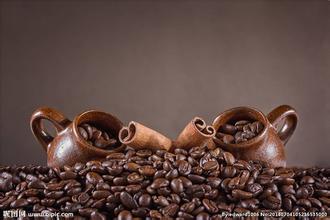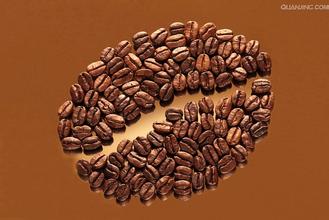Introduction to the characteristics of grinding degree of Mexican coffee varieties of fine coffee beans in producing areas
After a long dictatorship of Porfirio Diaz, the Mexican Revolution finally broke out in 1910. The revolutionary forces defeated the Union army, but infighting broke out, plunging Mexico into civil war for two decades. After the revolution, the Institutional Revolutionary Party of Mexico (Partido Revolucionario Institucional,PRI) came to power and ruled Mexico until the end of the 20th century, when the first party rotation was achieved in 2000.
On 2 July 2006, voting began in Mexico's presidential and parliamentary elections. On September 5, the Federal Election Court of Mexico officially announced that Felipe Calderon Hinojosa, the presidential candidate of the Mexican National Action Party, won the presidential election and was elected the new president of Mexico.
Enrique Pena Nieto, presidential candidate of the opposition Institutional Revolutionary Party, took part in the presidential election on July 1, 2012. The core of his campaign platform is "change"-opening up the oil industry monopolized by Pemex to foreign countries, raising taxes and reforming the labor market, coupled with his young and handsome image. His popularity has been ahead of the other three presidential candidates. In the end, the presidential election was won with 38.21% of the vote, the second peaceful rotation of political parties was realized, and the Institutional Revolutionary Party was in power again after 12 years in the wild.
Mexican coffee-growing areas are mainly concentrated in the southeastern highlands, near Guatemala. Most of the mountains in the south are volcanic areas, and the volcanic ash soil is not only conducive to the drainage of coffee roots, but also provides sufficient nutrients for the growth of coffee trees. Most of the coffee varieties planted are Kaddura, Tibica, bourbon, etc., and the treatment methods are mostly water washing treatment, which are classified according to altitude.
Coffee beans are mainly exported to the United States, and about 70% of the coffee is exported directly to the United States, which is used as a large amount of industrial beans, making it a coffee plantation in the United States. However, Mexico's annual output is not proportional to its position in the coffee world. Although the output is large, there is a lack of some representative boutique coffee with outstanding quality. So when it comes to the level of understanding of Mexican coffee, most people, including myself, will feel relatively strange. When we taste and discuss beans from excellent producing areas of various countries, Mexican coffee exists awkwardly like an outsider.
But with a climate suitable for coffee growth, excellent coffee varieties, good soil and high-altitude planting areas, why is the quality of Mexican coffee not satisfactory?
A few days ago, when I went to Mexico, some colleagues jokingly called Mexico popcorn coffee. The quality of the raw beans exported by Mexico was not good, and the raw beans bought were sometimes mixed with a little corn and sand. If the corn is not picked clean and mixed with raw beans into the roaster, it will really become popcorn. But now the quality of raw beans exported from Mexico has been greatly improved, and the mixing of corn kernels has been a story for many years. Corn was cultivated by the ancient Indians of Mexico, so Mexico is known as the "hometown of corn", and corn is also the main crop in Mexico. Coffee in the drying process is not fine enough to mix with corn kernels. This explains why corn is mixed with corn. From this matter, it is not difficult to find that the root cause of the unsatisfactory overall quality of Mexican coffee lies in the follow-up production processing. From the harvest, processing, grading, packaging and transportation of coffee fruits, unreasonable operation will lead to the loss of good flavor.
For Mexican coffee, of course, we can not ignore the existence of high-quality coffee, many coffee farms are constantly improving their own planting, harvesting, and processing technology. I drank this Mexican, ground dry aroma with refreshing herbal and nutty aromas. It has a medium mellow thickness, low acidity, sweet and sour red berries, smooth, clean and mild taste and a long finish. Generally speaking, Mexican coffee is worth a try. I also believe that the quality of Mexican coffee will become better and better with the improvement of local production technology.

Important Notice :
前街咖啡 FrontStreet Coffee has moved to new addredd:
FrontStreet Coffee Address: 315,Donghua East Road,GuangZhou
Tel:020 38364473
- Prev

Costa Rican Yersalo Coffee Flavor description, Grinding degree treatment, Taste characteristics, Fine Coffee introduction
In the 1820s, the independence movement in Latin America was high, and Costa Rica declared its independence in 1821. Incorporated into the Iturvid Empire of Mexico in 1822. He joined the Union of Central America in 1823. The Republic of Costa Rica was founded in 1848. From 1821 to 1870, the Costa Rican regime was mainly controlled by J.R. Morapolas and J.M. The economy is booming in the hands of the two Montealegre families.
- Next

Flavor description characteristics of Dominica coffee with excellent acidity introduction to the taste of fine coffee beans in producing areas
Coffee in Dominica is grown in highlands and lowlands, and its taste is slightly different. The upland is sour, but the taste is rich; the lowland is less sour and tastes smoother. Boutique coffee has become popular in recent years. High-quality coffee beans produced by some Dominican estates have a rich aroma, mellow taste and moderately bright sour taste, and have been bought with the more famous Puerto Rico beans or teeth.
Related
- Detailed explanation of Jadeite planting Land in Panamanian Jadeite Manor introduction to the grading system of Jadeite competitive bidding, Red bid, Green bid and Rose Summer
- Story of Coffee planting in Brenka region of Costa Rica Stonehenge Manor anaerobic heavy honey treatment of flavor mouth
- What's on the barrel of Blue Mountain Coffee beans?
- Can American coffee also pull flowers? How to use hot American style to pull out a good-looking pattern?
- Can you make a cold extract with coffee beans? What is the right proportion for cold-extracted coffee formula?
- Indonesian PWN Gold Mandrine Coffee Origin Features Flavor How to Chong? Mandolin coffee is American.
- A brief introduction to the flavor characteristics of Brazilian yellow bourbon coffee beans
- What is the effect of different water quality on the flavor of cold-extracted coffee? What kind of water is best for brewing coffee?
- Why do you think of Rose Summer whenever you mention Panamanian coffee?
- Introduction to the characteristics of authentic blue mountain coffee bean producing areas? What is the CIB Coffee Authority in Jamaica?

